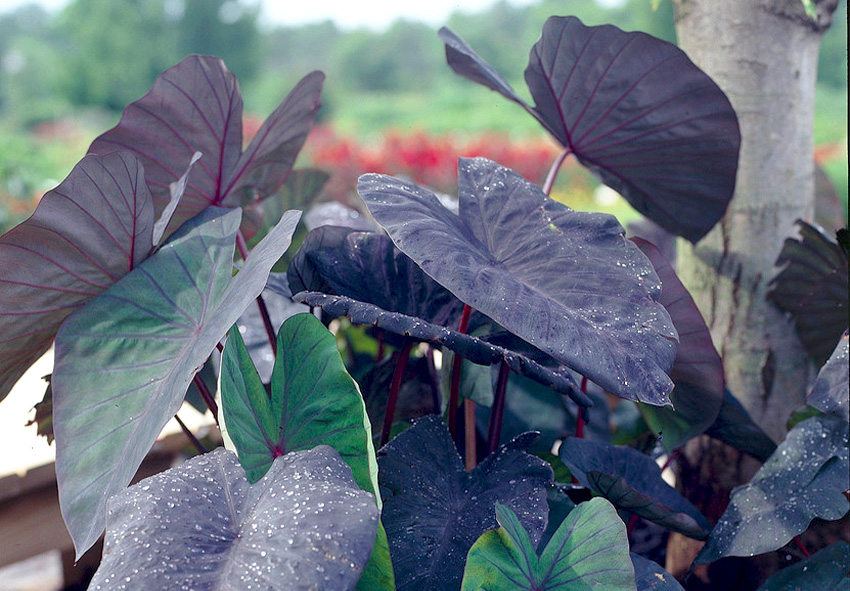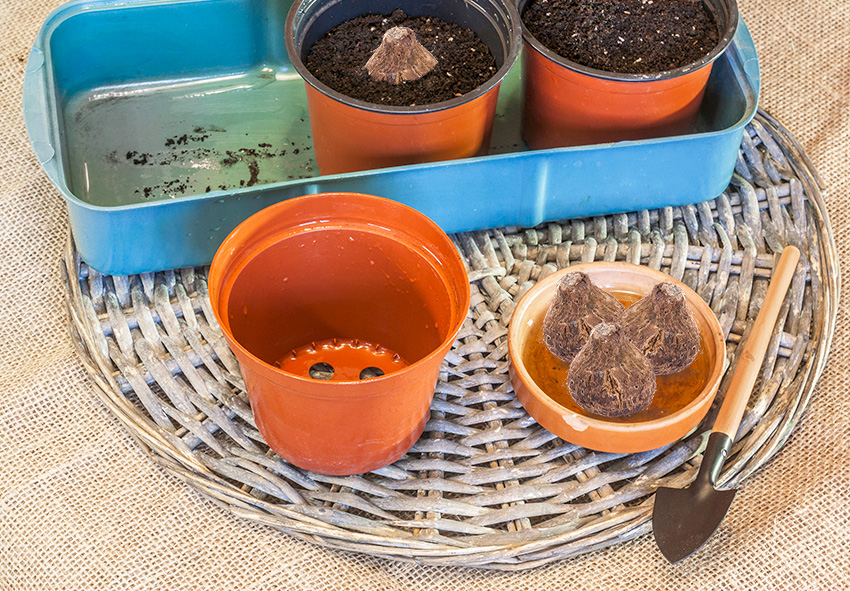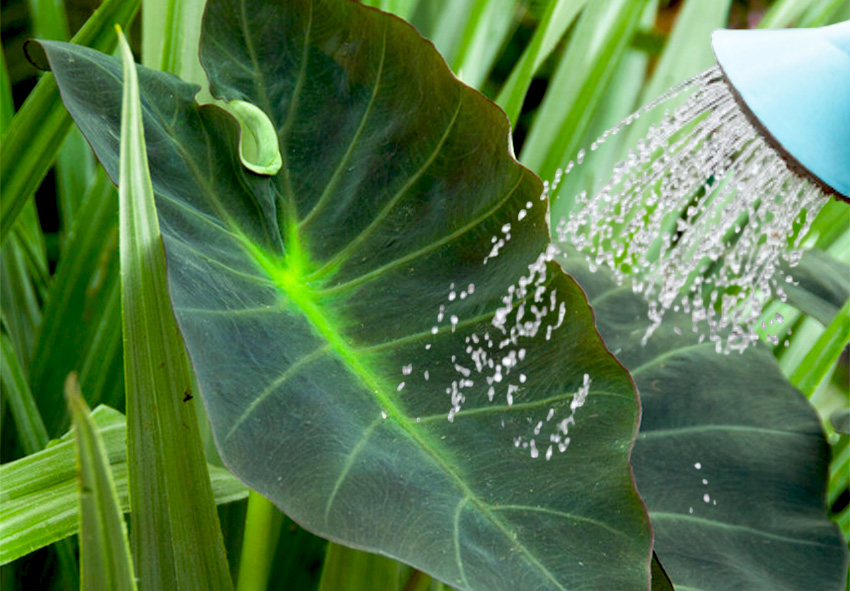Colocasia, commonly known as elephant ears, are tropical plants prized for their dramatic foliage and bold garden presence. Proper planting is crucial for achieving lush, vigorous growth and the impressive leaves Colocasia is known for. In this guide, we’ll walk you through everything you need to know about planting Colocasia bulbs—from choosing the right site to post-planting care. Our gardening blog is a perfect place to find all the information you need!
Understanding Colocasia Bulbs

To grow thriving Colocasia plants, it’s essential to first understand their unique structure. Colocasia grows from underground rhizomes or tuberous bulbs that store energy and nutrients. Choosing and handling these bulbs properly can make a significant difference in plant performance.
What Are Colocasia Bulbs?
Colocasia grows from tuberous rhizomes, often referred to as bulbs, which store nutrients and energy to fuel early growth. These bulbs vary in size and shape but are generally round to oval and firm to the touch. Healthy bulbs should appear solid with no signs of soft spots or mold.
Choosing Quality Bulbs
Selecting high-quality bulbs is essential to ensure healthy growth and impressive foliage in your Colocasia plants. Here are key tips to help you identify the best bulbs for planting:
- Check for Firmness – Choose bulbs that are firm to the touch, not soft or mushy, as softness can indicate rot or disease.
- Inspect for Mold or Spots – Avoid bulbs with visible mold, black spots, or unusual discoloration, which are signs of fungal infections.
- Look for Size and Weight – Bigger, heavier bulbs tend to have more stored energy and will usually produce more vigorous plants.
- Avoid Cuts or Bruises – Select bulbs that are free from mechanical damage, as wounds can become entry points for pathogens.
- Choose Dormant, Dry Bulbs – Fresh, dormant bulbs should be dry and not sprouting; early sprouting can make planting more delicate and risky.
Best Time to Plant Colocasia
Timing is critical when planting Colocasia to ensure successful sprouting and vigorous growth. These tropical plants are sensitive to cold, so it’s best to plant them when the risk of frost has passed. Warm soil and steady temperatures give the bulbs the right conditions to establish quickly.
Seasonal Planting Window
Colocasia bulbs should be planted in spring after the last frost date has passed. These tropical plants require warm soil—at least 65°F (18°C)—to sprout successfully. In cooler zones, wait until early summer or start them indoors for a head start.
Weather Considerations
Frost is a major threat to Colocasia, so it’s crucial to time your planting around stable, warm weather. If you’re unsure, monitor the forecast and delay planting until nighttime temperatures remain consistently above 50°F (10°C). Wind and cold snaps can stunt growth or damage new shoots.
Site and Soil Preparation
Before planting, selecting a suitable location and preparing the soil properly are key steps to ensure healthy development. Colocasia thrives in moist, fertile, and well-drained soil with partial shade to full sun exposure. Taking time to enrich the soil and plan the site layout helps the bulbs settle in faster and grow more robustly.
Choosing the Right Location
Plant your Colocasia bulbs in a location that receives full sun to partial shade. In very hot climates, light afternoon shade can protect the leaves from scorching. The site should also be protected from harsh wind, which can tear or damage large leaves.
Soil Requirements
Colocasia prefers rich, well-draining soil that stays consistently moist. A mix of compost and loamy soil provides the nutrients and texture needed for strong growth. Avoid compacted or dry soil, which can hinder root development and lead to poor performance.
How to Plant Colocasia Bulbs

Proper planting technique ensures that Colocasia bulbs establish strong roots and develop lush foliage. Planting depth, spacing, and bulb orientation all influence how well the plants grow. Following a few simple planting guidelines will help set your garden up for tropical success.
Planting Depth and Spacing
Colocasia bulbs should be planted about 2–4 inches deep, depending on size. Ensure the growing point, or bud, is facing up. Space each bulb 18–24 inches apart to give the plants room to expand and allow for airflow between them.
Step-by-Step Planting Instructions
Planting Colocasia bulbs correctly is key to enjoying their bold, tropical foliage. Follow these steps for successful planting:
- Choose the Right Spot – Select a location with partial shade to full sun, depending on the variety, and ensure it has rich, well-draining soil.
- Prepare the Soil – Loosen the soil to a depth of 8–12 inches and mix in organic compost or well-rotted manure to boost fertility and drainage.
- Dig the Hole – Create a hole about 4–6 inches deep (or twice the height of the bulb) and wide enough to accommodate the bulb without crowding.
- Place the Bulb – Set the bulb in the hole with the pointed end facing upward. If the shape is unclear, plant it on its side—it will orient naturally.
- Backfill and Water – Cover the bulb with soil, gently firming it down. Water thoroughly to settle the soil and initiate root growth.
- Mulch the Surface – Apply a light layer of mulch to retain moisture, regulate temperature, and suppress weeds.
- Monitor Moisture Levels – Keep the soil consistently moist (but not soggy) during the growing season for optimal foliage development.
Immediate Aftercare for Newly Planted Bulbs
Once your bulbs are in the ground, early care is crucial for kickstarting healthy growth. Consistent moisture, mulching, and monitoring will help the plants adapt quickly to their new environment. This initial care period sets the tone for a thriving growing season.
First Watering and Mulching
After planting, give your Colocasia bulbs a deep watering to help roots establish. Apply a 2–3 inch layer of organic mulch to retain moisture, regulate soil temperature, and suppress weeds. Avoid covering the crown of the bulb with mulch directly.
Early Growth Monitoring
Within two to three weeks, you should see sprouts emerge if soil temperatures are warm enough. Keep an eye out for early signs of growth and ensure the soil stays evenly moist. If no growth appears, gently check the bulb for signs of rot or dryness.
Tips for Planting Success

Even experienced gardeners can benefit from a few extra planting tips when working with Colocasia. From avoiding cold soil to enhancing early growth with fertilizer, small efforts yield big rewards. Knowing what to do—and what to avoid—helps ensure beautiful, vigorous elephant ears all season long.
Common Planting Mistakes to Avoid
Avoiding these frequent pitfalls can significantly improve the success of your Colocasia planting:
- Planting Too Shallow or Too Deep – Improper depth can stunt growth or cause bulb rot. Always plant about 4–6 inches deep, or twice the height of the bulb.
- Overwatering Newly Planted Bulbs – While Colocasia loves moisture, excessive watering before roots establish can lead to rot. Keep the soil moist but not waterlogged.
- Choosing Poorly Draining Soil – Colocasia doesn’t thrive in compacted or clay-heavy soil. Without good drainage, bulbs can suffocate or rot.
- Planting in Full Shade – Most varieties need at least partial sunlight to grow well. Total shade can result in weak, leggy growth.
- Neglecting Soil Enrichment – Skipping compost or organic matter can deprive the plant of nutrients, affecting growth and leaf size.
Enhancing Growth from the Start
Using a balanced, slow-release fertilizer or root stimulator at planting time can give your Colocasia a strong start. Planting in groups or clusters also creates a more impressive display and a microclimate that helps retain moisture and warmth for better growth.
Conclusion
Planting Colocasia bulbs correctly is the first step toward cultivating a bold, tropical display in your garden. From selecting high-quality bulbs to monitoring early growth, each step plays a role in your plant’s long-term success. For the best results, browse our online store for premium Colocasia bulbs and start growing elephant ears that turn heads!
Frequently Asked Questions (FAQs) about Planting Colocasia
1. When is the best time to plant Colocasia bulbs?
The best time to plant Colocasia bulbs is in the spring after the last frost has passed and soil temperatures consistently remain above 15°C (60°F). Warm soil helps the bulbs establish quickly and supports healthy early growth.
2. Can I order Colocasia bulbs from your online store?
Absolutely! Our online store Dutch-bulbs.com offers a curated selection of high-quality Colocasia bulbs ready for planting. Visit our store to browse available varieties and have them shipped directly to your door for a vibrant, tropical garden.
3. How deep should I plant Colocasia bulbs?
Colocasia bulbs should be planted about 4 to 6 inches deep, or roughly twice the height of the bulb. Planting at the correct depth ensures proper root development and protects the bulb from temperature fluctuations.
4. Can I grow Colocasia in containers?
Yes, Colocasia grows very well in containers, provided the pot is large enough and offers good drainage. Use a moisture-retentive soil mix, and keep the plant well-watered to mimic its natural tropical habitat.
5. What type of soil is best for Colocasia?
Colocasia thrives in rich, well-draining soil that holds moisture without becoming soggy. Loamy or sandy soil enriched with compost or organic matter is ideal for encouraging robust growth.
Published: 17.06.2025
